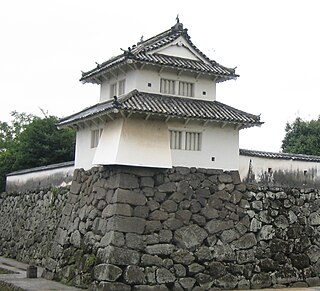This page is based on this
Wikipedia article Text is available under the
CC BY-SA 4.0 license; additional terms may apply.
Images, videos and audio are available under their respective licenses.
Yagura or Fortress is both a Static Rook opening and a castle in shogi.
Static Rook openings in shogi typically have the player's rook at its start position, which is the second file for Black and the eighth file for White.
In shogi, Iijima Bishop Pullback or Iijima's Back Bishop is a less common defensive Static Rook opening used against a Ranging Rook opponent. It has been used in both Black and White positions by professional players.

Yagura or Fortress is a castle used in shogi. It is considered by many to be the strongest defensive position in shogi in Double Static Rook games.
The Anaguma or Bear In The Hole is a castle used in shogi. It is commonly used in professional shogi.
In shogi, Buoyant Rook or the Deceiver is a surprise Static Rook opening in which the player's rook is advanced to the file directly above their line of pawns behind an advanced rook pawn.
The Wrong Diagonal Bishop or Parallel-Diagonal Bishop is a shogi opening characterized by a bishop trade followed by dropping the bishop in hand on the 45 square if played by Black or the 65 square if played by White.
In shogi, Right King or Right-hand King is a defensive subcomponent of different openings in which the king stays on the right side of board along with rook, which protects the last rank 9 as well as the eighth file. It is an exception to the general rule that the king is castled away from the rook.
In shogi, Silver Horns Central Rook is a type of Central Rook opening that uses the Silver Horn formation where the right and left silver are positioned at the ears of the player's rook, which is positioned on the bottom rank.
Ponpon Knight is a surprise Static Rook attack position used against a Ranging Rook opponent.
Central Rook Left Anaguma is Central Rook opening (戦法) used in Double Ranging Rook games.
The Bishop-33 opening is an opening characterized by moving the bishop to the 33 square early while leaving the bishop diagonal opening allowing for an early bishop trade. The opening is flexible in that it can lead to an Opposing Rook position as well as a Static Rook position with or without a bishop trade.
Subway Rook is an uncommon Static Rook shogi opening with the rook on the bottom rank 9 that supports an attack on the ninth file.
Elmo, stylized as elmo, is a computer shogi evaluation function and book file (joseki) created by Makoto Takizawa (瀧澤誠). It is designed to be used with a third-party shogi alpha–beta search engine.

